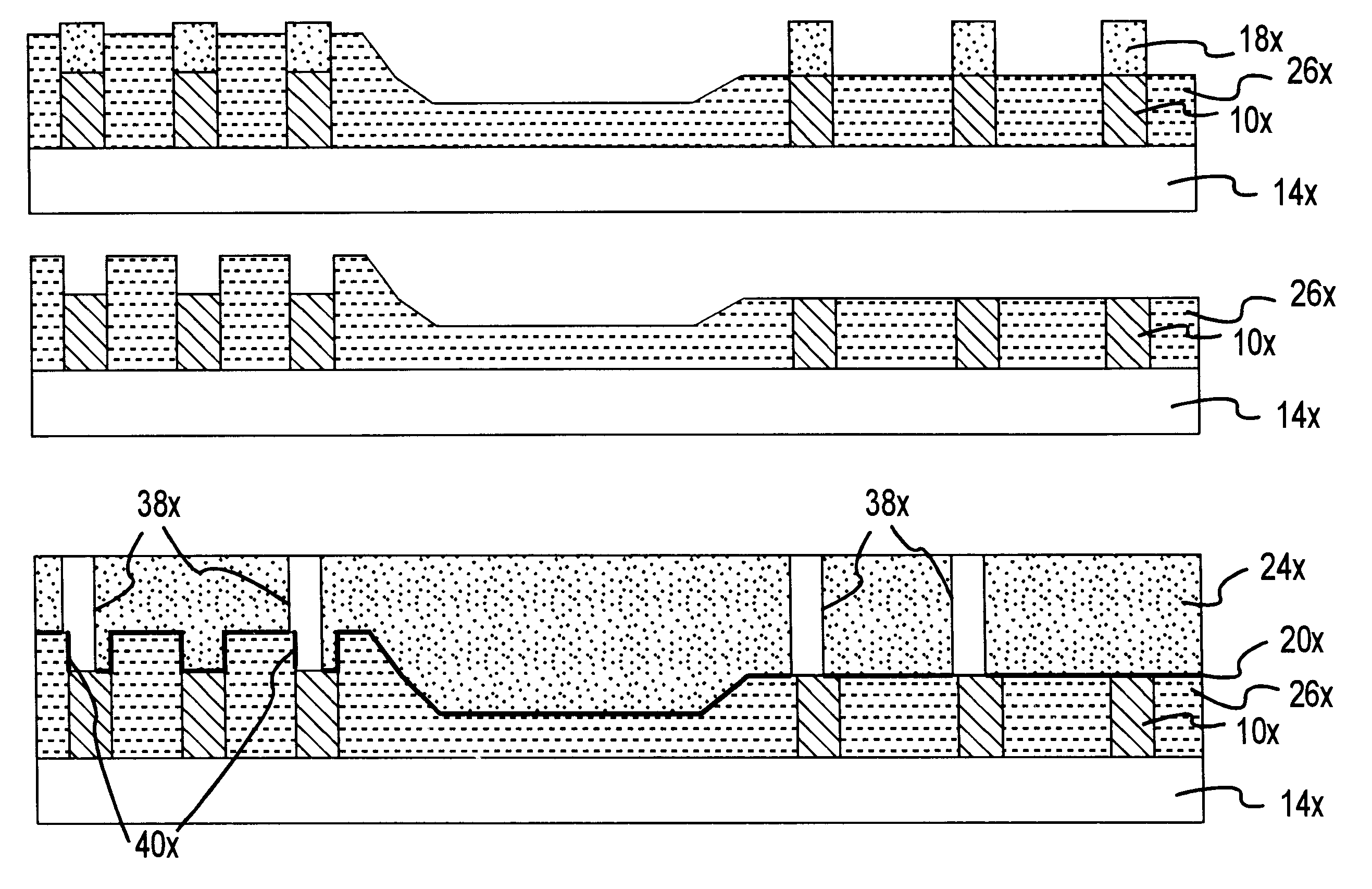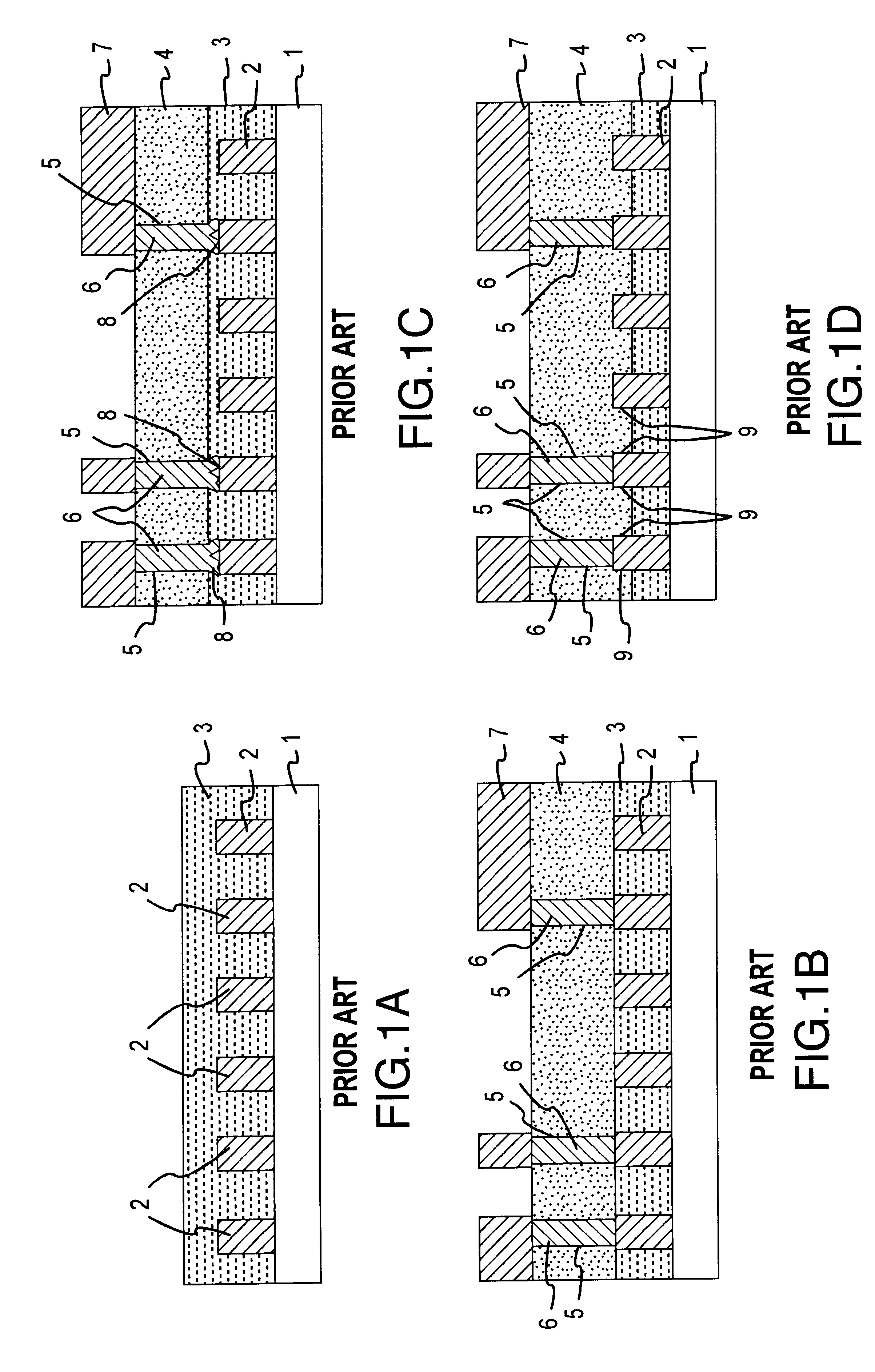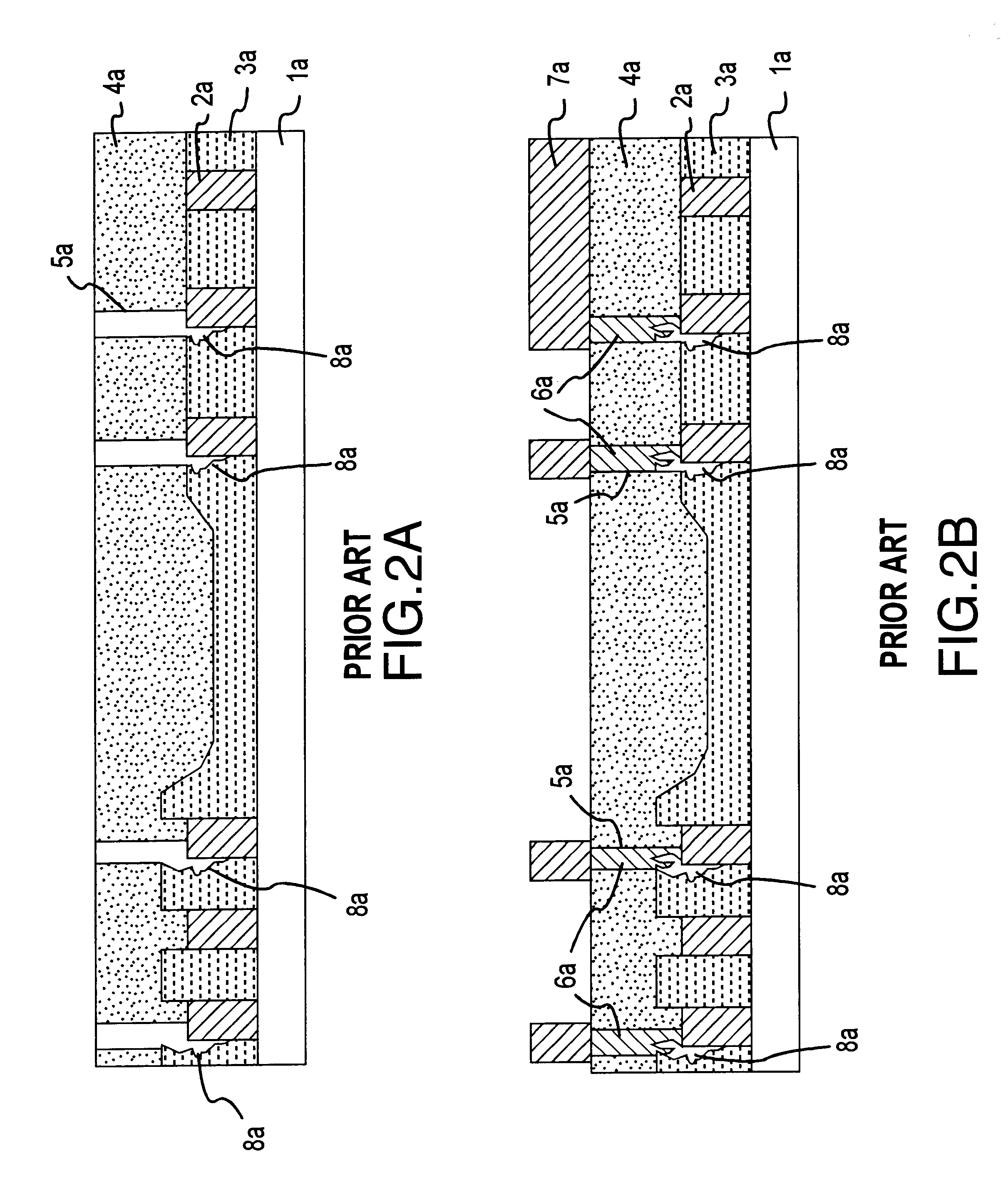Interconnect with low dielectric constant insulators for semiconductor integrated circuit manufacturing
a technology of dielectric constant insulator and integrated circuit, which is applied in the direction of semiconductor/solid-state device manufacturing, basic electric elements, electric apparatus, etc., can solve the problems of affecting the performance and reliability of the fabricated circuit, the use of low-k materials as ild in the interconnect is not mature, and the embedded low-k dielectric integration process suffers
- Summary
- Abstract
- Description
- Claims
- Application Information
AI Technical Summary
Problems solved by technology
Method used
Image
Examples
first embodiment
G A LOW-K ETCH-BACK STEP (PERFECTLY ALIGNED VIAS)
FIGS. 4A-4E are vertical cross-sectional views that illustrate selected stages of fabrication of the interconnect structure according to the first embodiment of the present invention where perfect alignment between via and metal line can be obtained. Referring to FIG. 4A, a substrate 14p is provided. Substrate 14p may, for example, include transistors, diodes, and other integrated circuit elements (not shown). A first metal layer 10p is deposited over substrate 14p. Metal layer 10p can include electrically conducting material, such as aluminum, titanium, or titanium-nitride, although other conductive material can be employed. Sacrificial layer 18p is deposited on first metal layer 10p. Sacrificial layer 18p includes a height that is used to increase the process window for low-k material 26p etch-back as described previously.
First metal layer 10p and sacrificial layer 18p are patterned to form metal lines each having a sacrificial laye...
second embodiment
LOW-K POLISH STEP INSTEAD OF LOW-K ETCH-BACK STEP
FIGS. 5A-5I are vertical cross-sectional views that illustrate selected stages of fabrication of the interconnect structure according to a second embodiment of the present invention. FIG. 5A is a vertical cross-sectional view of the interconnect structure after the processing steps illustrated in FIGS. 3A-3E (i.e., after metal layer 10y and sacrificial layer 18y have been deposited on substrate 14y and patterned, and low-k material 26y has been deposited to fill gaps between metal lines 10y and to cover sacrificial layer 18y). Referring back to FIG. 5B, low-k material 26y is removed by a chemical mechanical polish (CMP) process step.
For the sake of brevity, since FIGS. 5C-5I correspond generally to FIGS. 3G-3M, the description of FIGS. 3G-3M, 7A, and 7B as they relate to FIGS. 5C-5I will not be repeated herein. Instead, it is noted that the interconnect structure differs from that of the second embodiment in the following ways: (1) lo...
third embodiment
G BOTH A LOW-K PLANARIZATION STEP AND A LOW-K ETCH-BACK STEP
FIGS. 6A-6D are vertical cross-sectional views that illustrate selected stages of fabrication of the interconnect structure according to a third embodiment of the present invention. FIG. 6A is a vertical cross-sectional view of the interconnect structure after the processing steps illustrated in FIGS. 3A-3E, (i.e., after metal layer 10z and sacrificial layer 18z have been deposited on substrate 14z and patterned, and low-k material 26z has been deposited to cover substrate 14z and gap fill metal layer 10z and sacrificial layer 18z). Referring to FIG. 6B, low-k material 26z is removed by a CMP process step to a level that is higher than the sacrificial layer 18z. Referring to FIG. 6C, low-k material 26z is further removed by an etch-back process, such as by plasma etch. Referring to FIG. 6D, sacrificial layer 18z is then removed.
The processing steps in this embodiment that occur after FIG. 6D correspond generally to FIGS. 3H...
PUM
| Property | Measurement | Unit |
|---|---|---|
| thickness | aaaaa | aaaaa |
| thickness | aaaaa | aaaaa |
| thickness | aaaaa | aaaaa |
Abstract
Description
Claims
Application Information
 Login to View More
Login to View More - R&D
- Intellectual Property
- Life Sciences
- Materials
- Tech Scout
- Unparalleled Data Quality
- Higher Quality Content
- 60% Fewer Hallucinations
Browse by: Latest US Patents, China's latest patents, Technical Efficacy Thesaurus, Application Domain, Technology Topic, Popular Technical Reports.
© 2025 PatSnap. All rights reserved.Legal|Privacy policy|Modern Slavery Act Transparency Statement|Sitemap|About US| Contact US: help@patsnap.com



